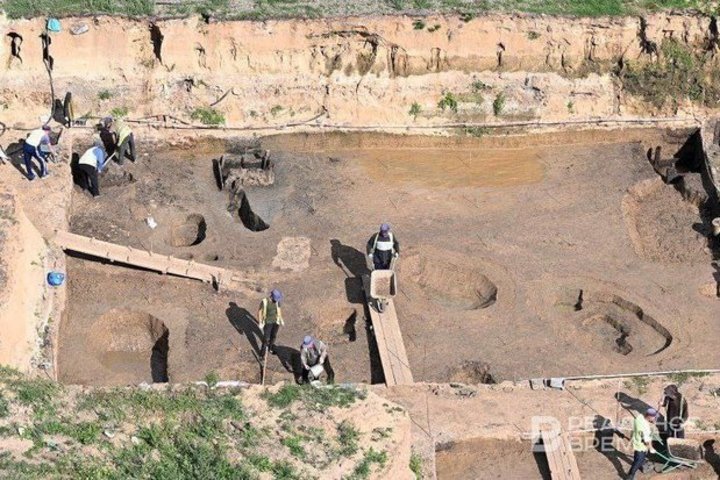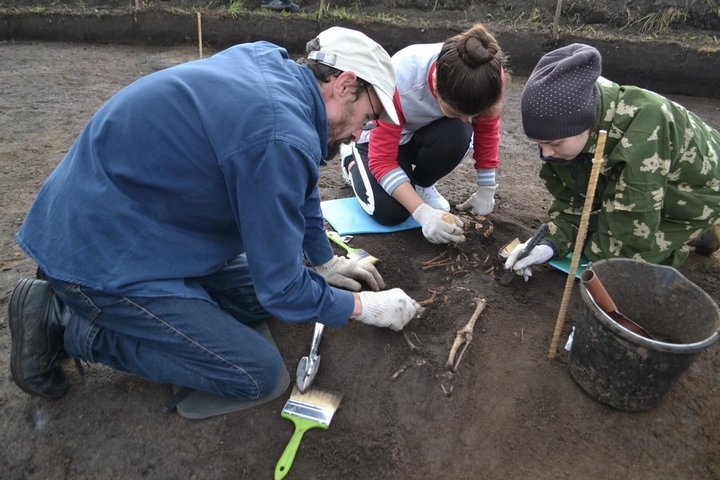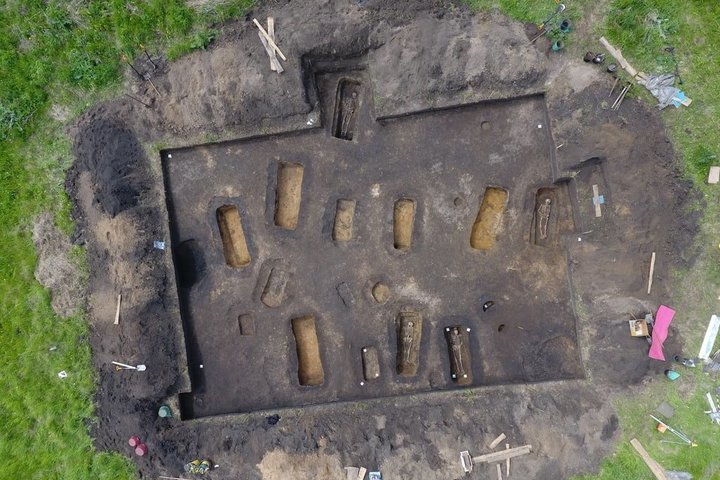Tatarstan to introduce a special regime for 7 discovered archaeological sites

Cultural heritage sites where a special order of use is determined
Laishevskoe Selishche II is an archaeological monument located in the Laishevsky district of Tatarstan. According to research, it was a centre of crafts and trade. The inhabitants of the settlement were engaged in mining and smelting iron, making blacksmithing products, as well as farming and hunting. It dates back to the IV–VII centuries.
Chirpynskoye Selishche is located in the same area. It is an object of cultural heritage of federal significance. It is located on the left bank of the Ushnya River, on a gentle plowed terrace above the meadow. During the excavations, Bulgarian pottery ceramic material of yellow-red, brown and gray colours was found, as well as steel-coloured material with vertical polishing and ornament. Besides, moulded gray ceramics with the addition of chamotte were discovered. The estimated date of the selishche's appearance is the XIII–XIV centuries.

The Dubki site is also on the list in Kazan, the territory of which includes fragments of preserved natural oak forests with linden trees, Norway maple and other types of broad-leaved forests. They are the remains of the former Igumnovsky forest on the left bank of the Volga River. Here you can see the alley created in honour of Empress Catherine II's visit to Kazan in 1767. Thirty-two oak trees are preserved to this day, which grow along the Boevaya Street. In 1905-1907, mass gatherings and May Day meetings of workers of Zarechye, as well as soldiers of the Kazan garrison, took place in this grove. These events are reflected in the novel “Spring Winds” by K. Najmi.
From 1948 to 1976, 5 archaeological sites were discovered on the territory of Dubki, which date back to the period from 4 to 2 thousand years BC.

The Kirbinskaya Stoyanka is an archaeological monument located in the Laishevsky municipal district on the right bank of the Mesha River, near the village of Kirbi. The site belongs to the late Prikazan culture, namely the Maklasheevsky stage. Realnoe Vremya previously reported that a few dozen kilometres from Kazan, near the village of Kirby in the Laishevsky district, the remains of an ancient observatory and a pagan temple dating back one and a half thousand years were discovered. Archaeologists call this place the “Kirbinsky hillfort” and attribute it to the Imenkov culture, which existed in the IV–VII centuries AD.
Imenkovskoye selishche II and Imenkovskoye Selishche I are also located in the Laishevsky district, near the village of Imenkovo. This place is connected with the history of the religious figure of the XVII century, Haji Hafiz, on whose grave a tombstone created by Kilmahammat Ishman was discovered.

Imenkovskoye selishche I refers to the Imenkov culture, which existed in the V–VII centuries of our era. During archaeological excavations on the territory of the selishche, the remains of pottery, utensils, bone and metal products were found. In addition, here one can see traces of the Maklashevsky stage of the Prikazan culture, the Azelinsky and Imenkov cultures, as well as the all-Bulgarian monument.
Tarlashi Burial Ground is located in the Laishevsky district and dates back to the XVI–XVII centuries. In 2016, the monument was opened, and in 2018 it was studied by an archaeological expedition, which included scientists from the Chuvash State Institute of Humanities, Chuvash State Pedagogical University named after I.Ya. Yakovlev, Institute of Archaeology named after A.Kh. Khalikov and the Kazan Federal University.
As a result of the research, 24 burials were found, arranged in rows along the north-south line. In one of the burials, funeral implements were found: an iron knife, a kochedyk (a tool for weaving bast shoes) and a tinderbox two flints for striking a light.
New rules
According to the provisions of the law, work can be carried out subject to several rules:
- the need to enter information about the boundaries of the territory of the specified cultural heritage object in the unified state register;
- archaeological, excavation, construction, land reclamation, and household works are possible provided that the safety and access of citizens to the object are ensured;
- a special regime for the use of a water body provides for the possibility of carrying out works defined by the Water Code of Russia, with the condition of ensuring the preservation of the archaeological heritage site;
- it is allowed to carry out work on the study, search and seizure of finds in the presence of a permit issued by the federal agency of the cultural heritage site. However, to do this, it is necessary to include mandatory sections on safety in the work projects. In addition, it is necessary to provide a plan for conducting rescue archaeological field work and assess how they will affect the archaeological heritage site;
- works without the implementation of mandatory sections on the preservation of the archaeological heritage site in the project or rescue plan are prohibited.
“Violation of the special regime for the use of the territory of archaeological heritage sites entails administrative and criminal liability”
The Tatarstan Committee for the Protection of Cultural Heritage told Realnoe Vremya why the special regime has been introduced and what consequences its violation will have.
